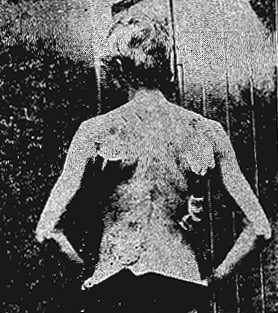British government denies policy of reprisals as more torture allegations emerge
Westminster, 3 November 1920 - The British government has no policy of reprisals in Ireland, the Chief Secretary for Ireland, Sir Hamar Greenwood, told the House of Commons yesterday: ‘What are called reprisals are frequently legitimate acts of self-protection – by police and soldiers in searching houses, shops, and other premises for criminals, ammunition, and explosives.’
Greenwood was replying to nationalist MP T.P. O’Connor, who claimed that there had been a ‘renewal’ of the reprisal policy in recent days in Co. Tipperary, in the towns of Littleton and Thurles, and in the Kerry towns of Tralee, Ballybunion and Ballyduff.
The growing unease in Britain over the government’s policy in Ireland was reflected in a lengthy debate yesterday in the House of Lords. Earl Loreburn moved a motion which, while condemning the murders and excesses perpetrated by republicans in Ireland, stated that the ‘remedy is not to be found in reprisals and in the senseless destruction of property.’ Loreburn added that the government needed to introduce, without delay, ‘a comprehensive measure of self-government for Ireland including fiscal autonomy... reserving to the imperial parliament the control of the Navy, Army, and Foreign Affairs.’
In his contribution to the debate Randall Davidson, the Archbishop of Canterbury, expressed concern over the potential damage to the international reputation of England, particularly in countries such as the United States, as a result of what is happening in Ireland. Acknowledging the ‘almost incalculable’ difficulties which the government is currently facing, the archbishop said that he was ‘quite certain that unless something stronger, something more robust in the way of the denunciation, the prevention, and the ending of these reprisals comes about, we shall have done quite untold harm to the credit of the public life of England at home and abroad.’
Torture allegations
Alongside the issue of reprisals is the growing evidence of the
torture and beating of republicans while in custody. A few weeks
ago, reports were circulated about the
brutal treatment of Sinn Féin prisoners, Thomas Hales
and Patrick Harte,
in Cork. In recent days, the Freemans Journal has carried
more allegations of torture, this time against Auxiliary cadets
based in Portobello Barracks in Dublin. The alleged victim
recalled having his hands tied and being thrown on a plank bed,
where he was beaten with rifle butts and belts until the flesh on
his back was torn and welted. The
Freeman’s Journal has published a photograph of the
victim’s back to support his allegation. When the beating
was finished, he was taken outside and put up against a wall as if
to be executed, but his life was spared. He was eventually
released without any charge.

The photograph published by the Freeman’s Journal of the alleged torture. (Image: Freeman’s Journal, 25 October 1920)
Freeman’s Journal summoned
The publication of the story by the
Freeman’s Journal comes just days after the
authorities moved to once again suppress the newspaper. The
directors of the newspaper have been charged with spreading false
reports likely to cause disaffection. The charge relates to a
paragraph published on 10 September about the Black and Tans.
This is the second time in 12 months that the government has taken action against the Freeman’s Journal. Last December, the Superintendent of the Dublin Metropolitan Police, supported by a large force of police and military, entered the Townsend Street premises of the paper and dismantled the machinery to prevent publication. This situation continued for six weeks, ‘by far the longest period for which any daily newspaper has ever been suppressed’ in Britain or Ireland, the paper claims.
The Freeman’s Journal believes that one of the reasons they are being targeted is that their defence of ‘the rights of the Irish people’ has been a source of ‘great embarrassment’ to the government.
[Editor's note: This is an article from Century Ireland, a fortnightly online newspaper, written from the perspective of a journalist 100 years ago, based on news reports of the time.]





















